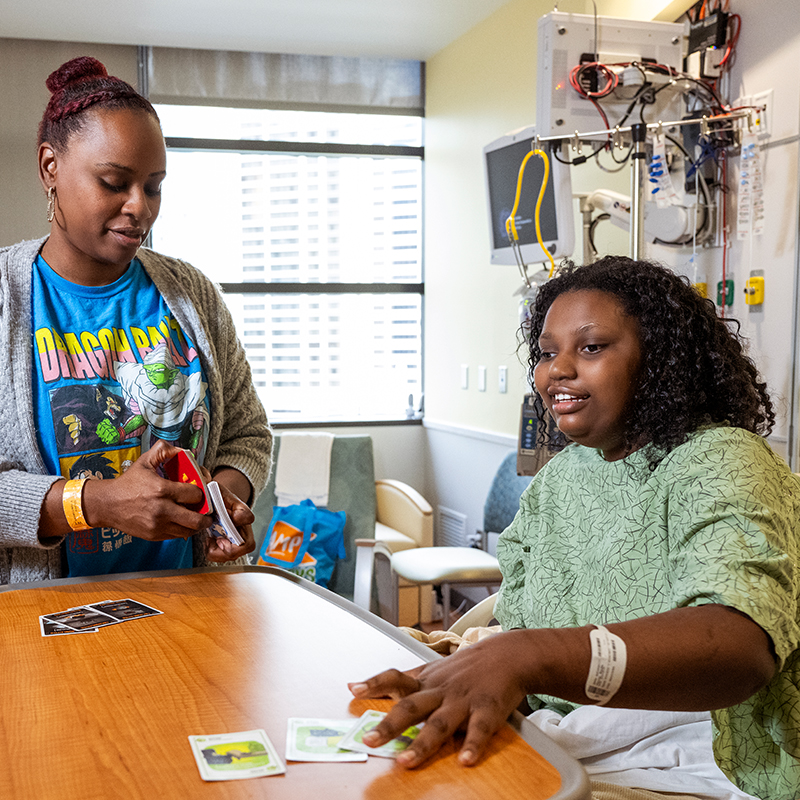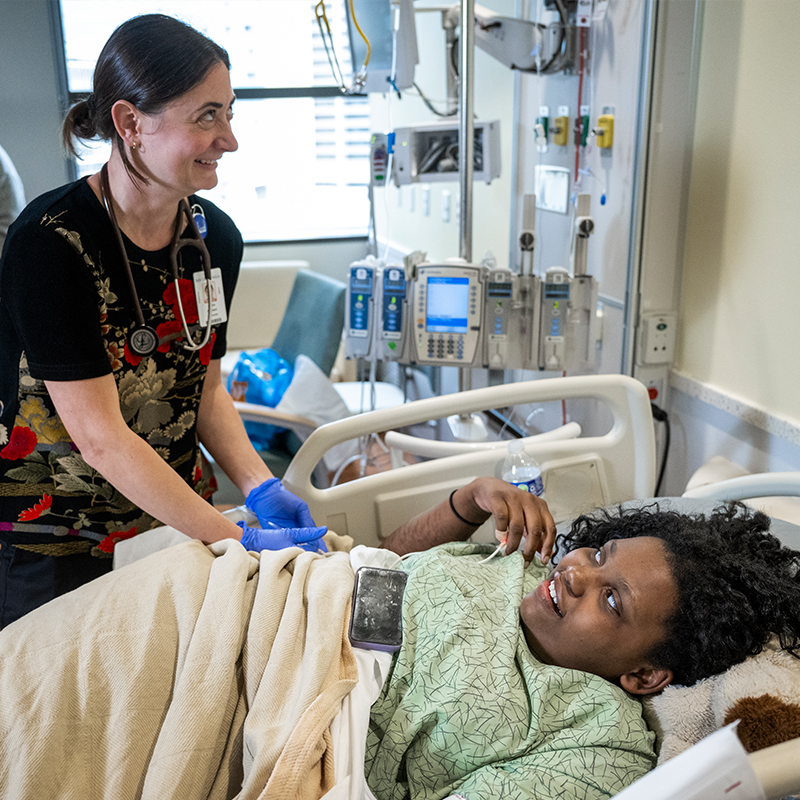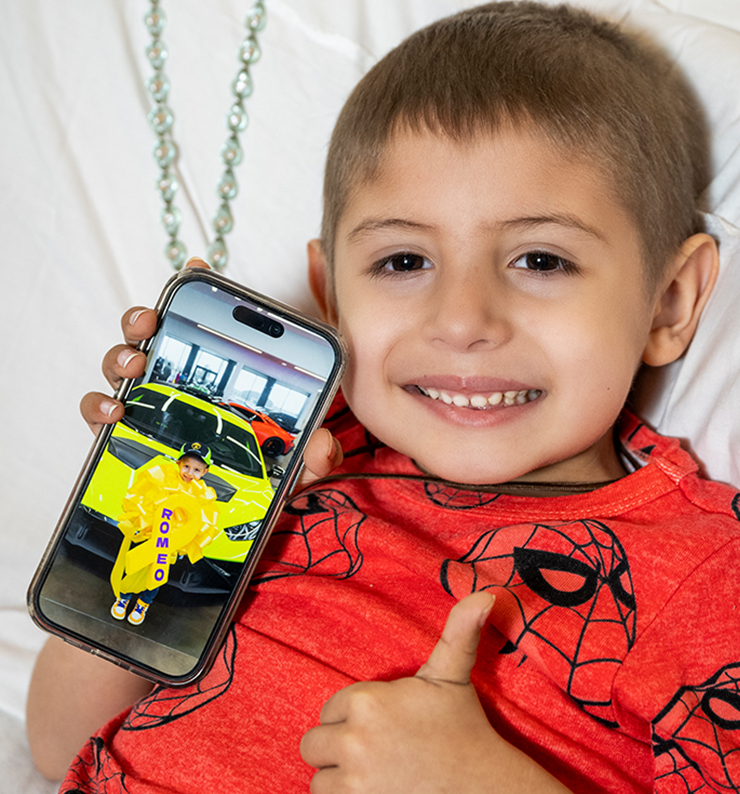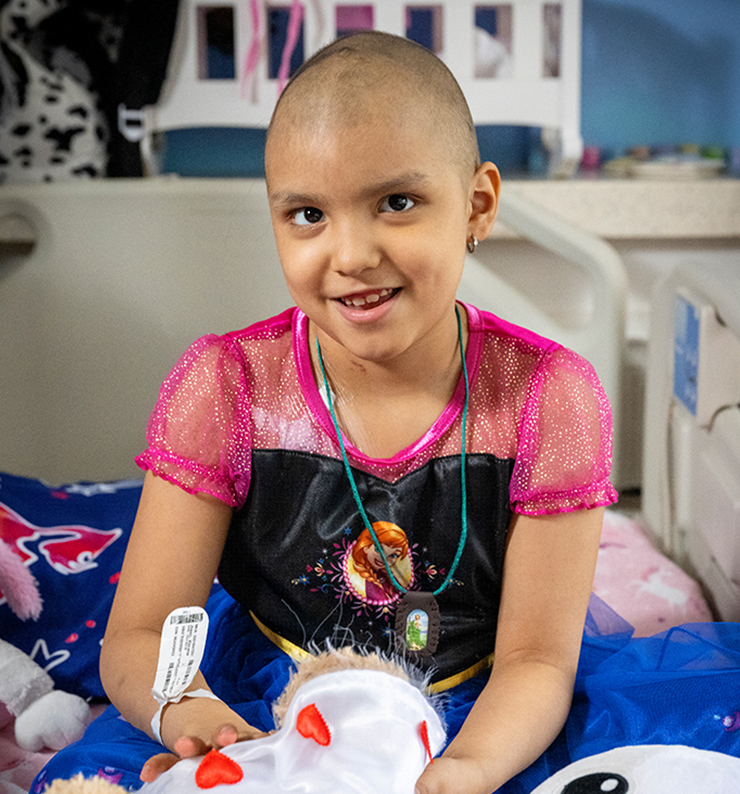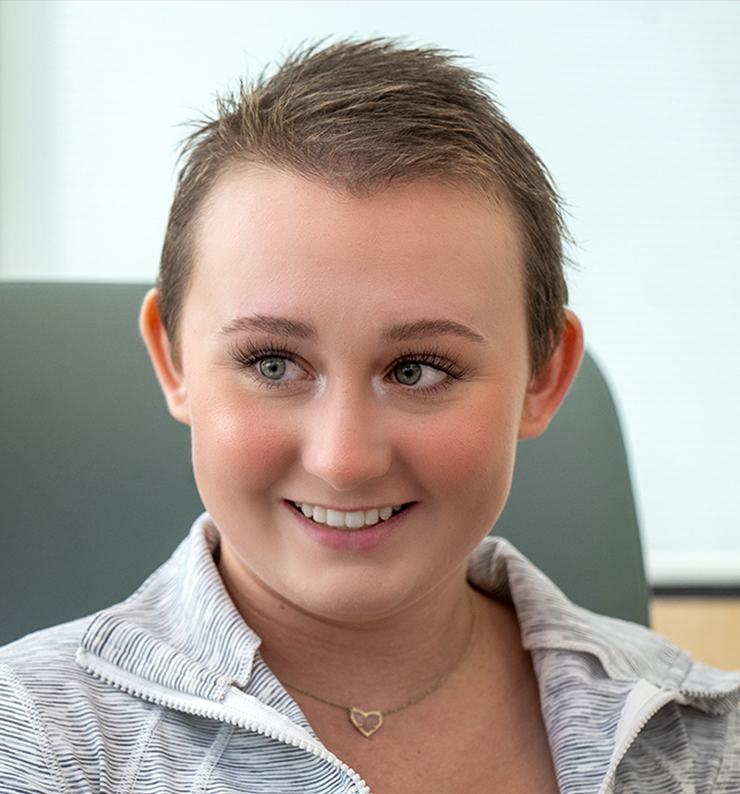Pre-teen benefiting from CAR T cell therapy clinical trial for brain tumor
It was a scorching summer in San Antonio when Shawlonda’s youngest daughter, Nadia, started suffering from extreme headaches.
“I assumed it was the Texas heat,” said Shawlonda, who grew up in Kansas. “We’d recently moved to San Antonio. Nadia was outside every day for horseback riding lessons. She loves horses, but she would come home with these horrible headaches. No amount of hydration seemed to help.”
Nadia’s symptoms grew worse, until finally - on the morning of her 11th birthday in late August - she lay down on the floor and told her mom that her headache was so painful, she could not move.
“That’s when we knew something was seriously wrong,” recalled Shawlonda. “She cried and then rolled up into a ball and went to sleep on the floor. We took her to a nearby hospital right away.”
The diagnosis
An MRI brought horrible news.
“After the MRI, a doctor pulled me aside and said, ‘I’m so sorry to tell you this, but there’s a big mass in Nadia’s brain,’” Shawlonda remembered. “We were standing in the hallway. What neither of us knew was that Nadia had come out of the room. She was right around the corner, listening.”
Nadia was diagnosed with a rare brain tumor, diffuse midline glioma (DMG). These are highly aggressive cancers that occur in crucial areas of the brain. Many of these tumors are not operable; however, even with surgery, radiation and chemotherapy, few children survive beyond the first or second year past their initial diagnosis.
To make it sound less scary, Nadia decided to ignore the medical term, DMG, and instead refers to her tumor as “meatball,” as she overheard someone describing it as being the size of a meatball after her initial scan.
The treatment
Nadia had multiple neurosurgical procedures after her brain tumor was diagnosed.
“After the first surgery, Nadia could not walk because it affected a specific part of her brain,” said Shawlonda. “Next surgery, they went in and removed ‘meatball’ completely, wiped it clean. That impaired the vision in her right eye, so she wound up with multiple sensory-motor deficits. Basically, she had to start all over from the beginning: talking, feeding herself and walking. She went from this rambunctious, outdoor child who loved riding horses to a girl relearning how to walk.”
During her recovery, Nadia showed tremendous courage and perseverance. “She just muscled through,” recalled Shawlonda. “She could not wait to get back to horses, so she kept pushing every day.”
Six months after radiation treatment, a scan revealed that Nadia’s tumor had grown back. Sadly, this is a common outcome with DMGs. That is when Nadia and her family were referred to Texas Children’s Cancer and Hematology Center.
Shawlonda reflects on the frightening day when she heard Nadia’s scan results, as she looks at her daughter, who now sits between her favorite stuffed animals in her hospital bed at Texas Children’s Hospital. “At first, Nadia was like, ‘Oh my God, am I going to die?’ Then she saw my face and tried to make me feel better. She said, ‘Mom, are you okay?’”
“I remember it vividly,” said Nadia, who is now 12 years old. “I got dressed after the MRI, opened the door and looked outside the room. The first thing I heard was, ‘she has a mass,’ and I was stunned. I was on the verge of crying. But I wanted to make sure my mom was okay because I saw the look on her face.”
CAR T cell therapy clinical trial
Last year, Texas Children’s Cancer and Hematology Center launched a groundbreaking clinical trial to study a novel cellular immunotherapy specifically designed to treat DMGs. Nadia was enrolled in this trial in January 2023.
Trials, like the one in which Nadia is enrolled, would not be possible without the generous support of our community and research grants, including those from state and federal agencies and pediatric cancer research foundations. The Faris Foundation, a close philanthropic partner and friend to Texas Children’s, generously pledged $750,000 to fund the cell therapy trial for DMGs.
“This trial is focused on one of the most difficult-to-treat childhood brain tumors,” said Dr. Austin Stuckert, Nadia’s physician at Texas Children’s and one of the trial’s main researchers. “This promising approach overcomes some of the historic limitations of immunotherapy for brain tumors.”
“Nadia has done very well. We’ve seen her tumor shrink on the MRI scans,” said Dr. Stuckert. “Most importantly, Nadia’s symptoms, like her chronic headaches and difficulty walking, have improved, and she’s feeling good. Additionally, she no longer needs steroids, a medication to reduce brain swelling that frequently occurs with brain tumors. Nadia is a special girl, and we’re all very excited about her response to the therapy.”
Texas Children’s Hospital
Shawlonda is tremendously grateful for the care her daughter has received at Texas Children’s Cancer and Hematology Center.
“We have to stay here for six weeks at a time for Nadia’s treatment, so we’ve gotten to know a lot of people,” she said. “From the doctors to the nurses to the floor managers, everyone has been so wonderful. You can tell they genuinely care. Love and concern must be the standard of care at Texas Children’s. I don’t want to sound cliché, but if the scale was 1-5, I would give the staff a 10.”
This is not to say that Nadia’s treatment has been easy, Shawlonda was quick to clarify. “It’s still really tough,” she said. “Being stuck in a hospital for weeks at a time, it’s just hard for everyone.”
In fact, Shawlonda, who is an army veteran - a retired sergeant first class who served three tours of duty, two in Iraq and one in Afghanistan - said that no war experience is nearly as difficult as seeing her child battle cancer.
“Nadia is fighting her own war,” she said.
Go to the laundry room
When asked what advice she would give to parents whose children are fighting similar battles, Shawlonda said, “Go to the laundry room.”
She explained, “As a parent, you want to be strong for your child, and you don’t want to leave them alone for even one second - even just to get food. So, you wind up holding in all your emotions. One day, I remember, when Nadia was home, I went upstairs to the laundry room, and I paused, realizing I was alone for the first time in days. I put down the laundry and just started weeping - weeping and weeping. It was very therapeutic, and we need that as parents.”
This is not to say that Nadia’s treatment has been easy, Shawlonda was quick to clarify. “It’s still really tough,” she said. “Being stuck in a hospital for weeks at a time, it’s just hard for everyone.”
Hope for the future
The other thing parents need, said Shawlonda, is hope.
“Hope is more than just a word,” she said. “Hope is the air we breathe every day. Nadia is the most caring, compassionate child. She dreams big and loves everyone. She is extraordinary. She’s strong, caring and intelligent. She thinks outside the box. And when I look at her and she’s lying in her hospital bed, my hope is that I can continue to be strong for her and that she can grow up to be a healthy, loving mother herself one day.”
Learn more about the Brain Tumor Program at Texas Children’s Cancer and Hematology Center.
